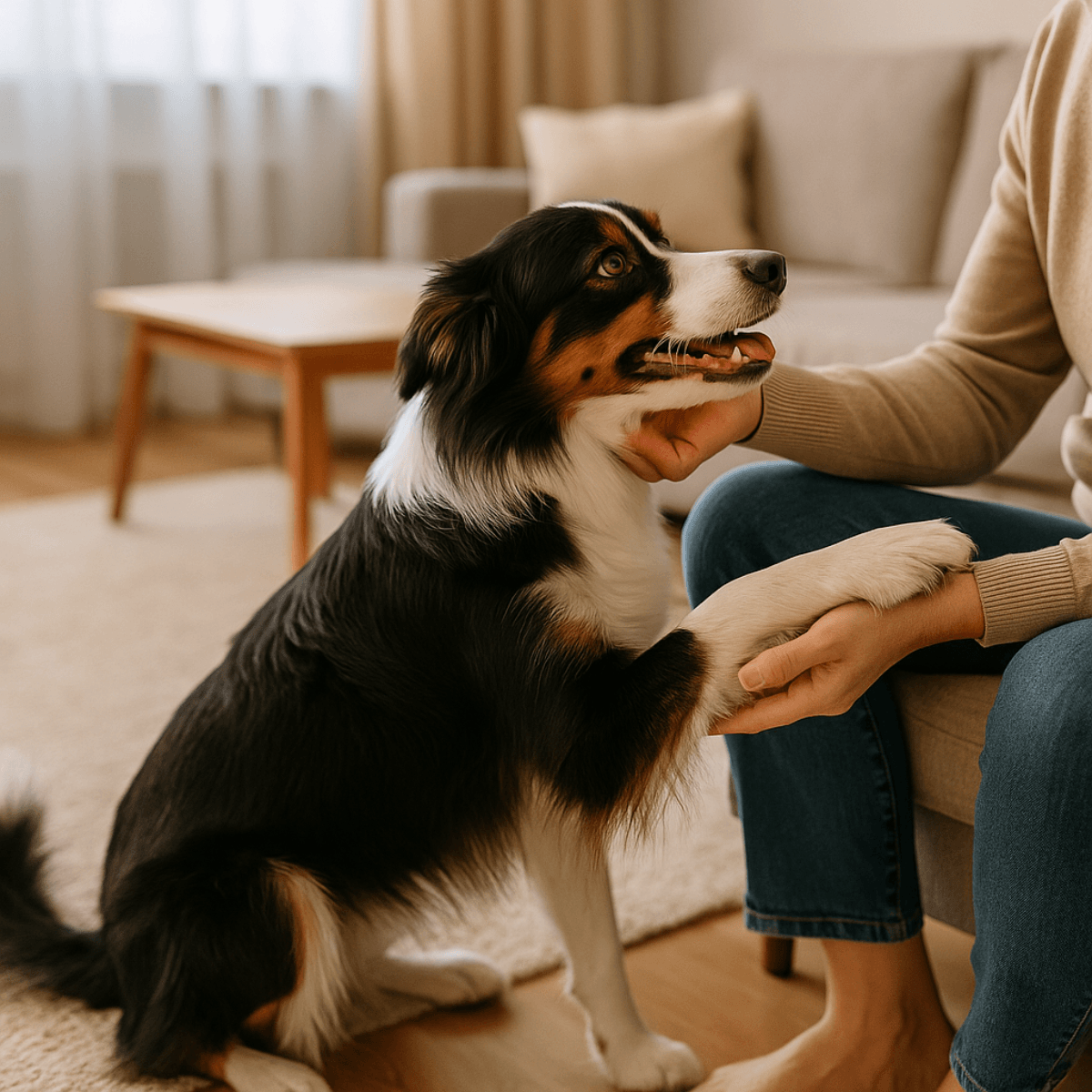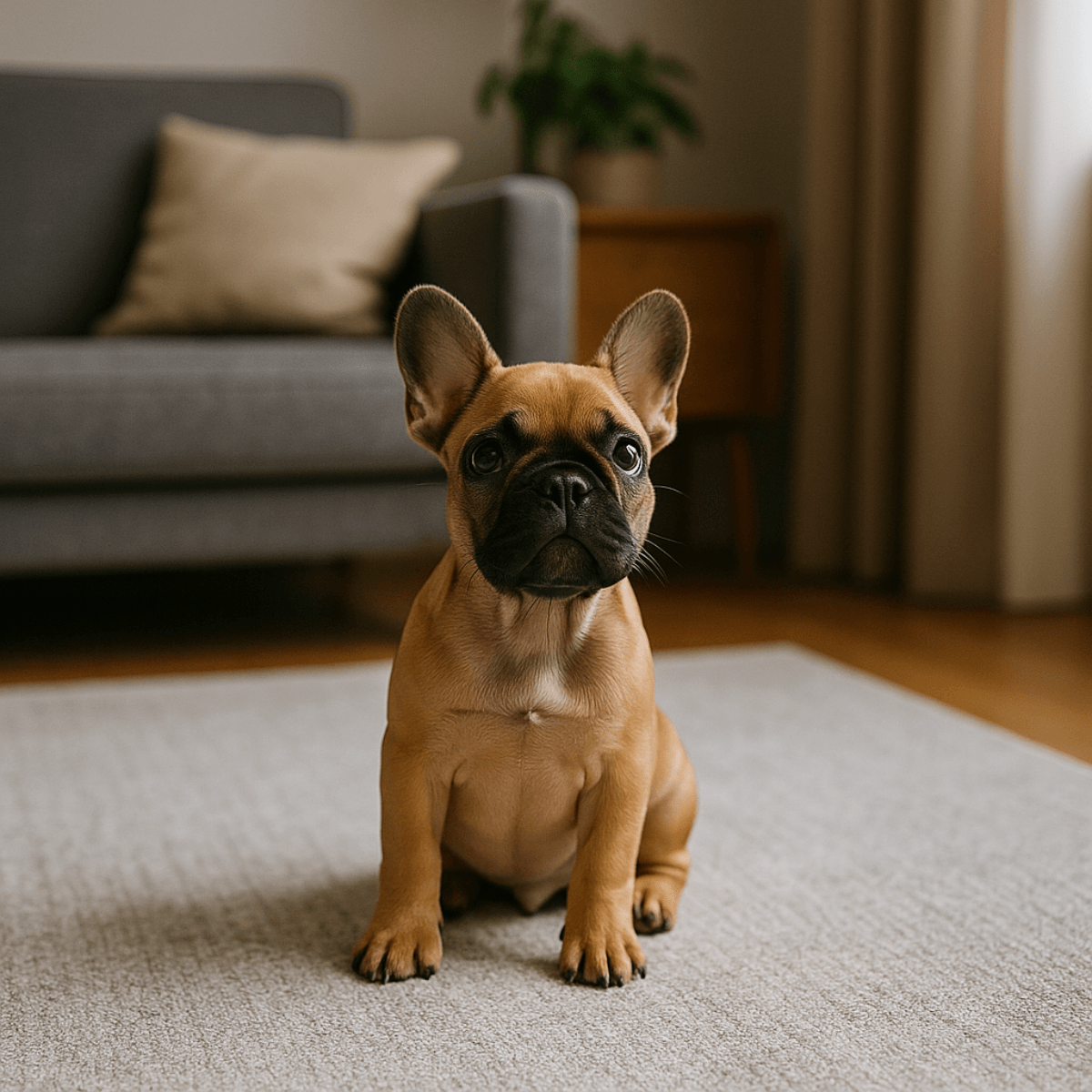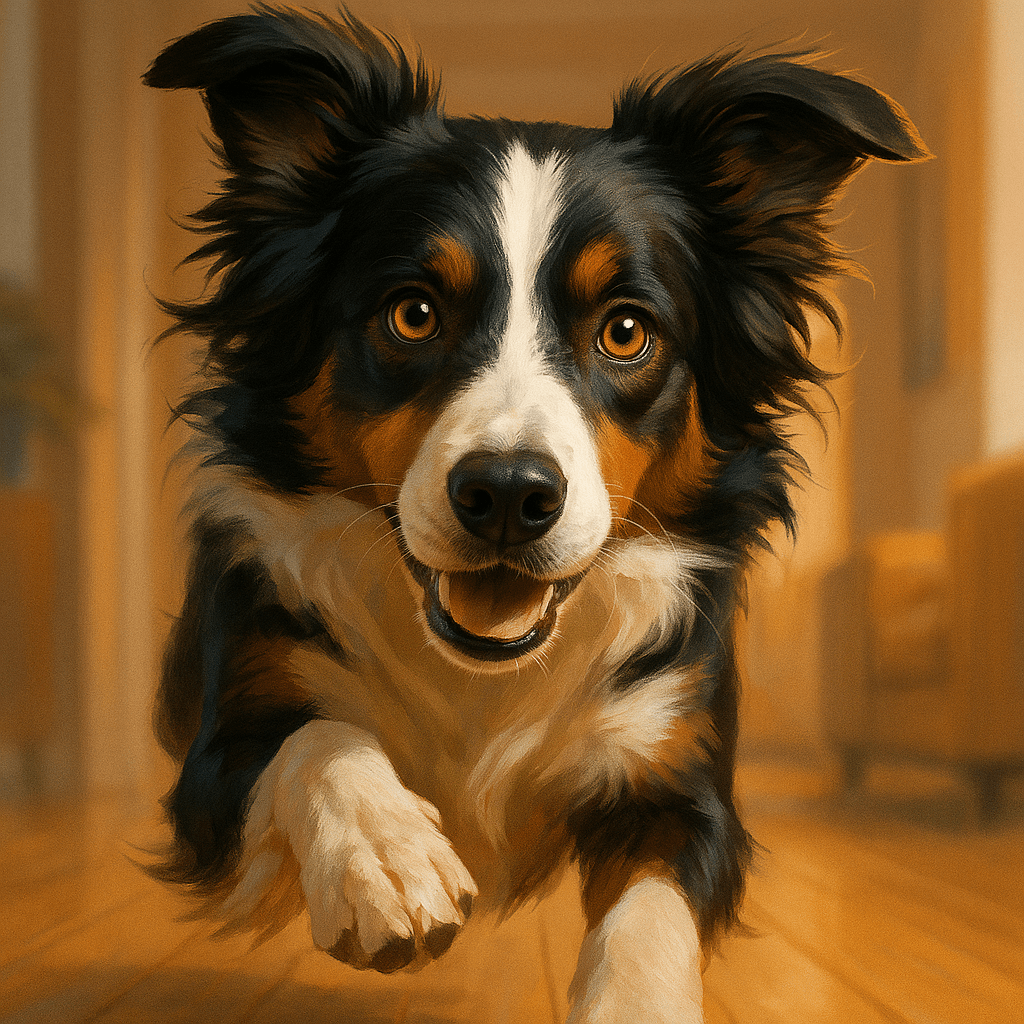
🐾 How Dogs Show Affection – 10 Signs Your Pet Loves You
Dogs have been companions of humans for thousands of years, and their emotional bond with their owners is exceptionally strong. Regardless of breed, age, or life experiences, every dog has a natural need to form a deep, loyal relationship with its humans.
They express their feelings not only through cheerful greetings or tail wags—their love language is much richer and more subtle. Although they cannot speak with a human voice, they communicate their emotions perfectly through their bodies, gaze, behavior, and sounds. Recognizing these signals can significantly deepen your relationship with your pet and help you better understand their needs.
Does your dog love you? Find out how dogs show love and affection!
"Dogs are social animals that evolved in close relationship with humans. Their ability to express feelings and recognize emotions is unmatched in the pet world."
1. Eye contact
A dog that looks you straight in the eye without any signs of stress expresses not only trust but also a deep emotional connection. In dogs, just like in humans, looking activates the release of oxytocin – the hormone responsible for bonding and building closeness.
This look is a kind of "dog smile," a subtle gesture that says, "You're important to me." If a dog looks deeply into your eyes, especially in quiet moments, it's an expression of trust and love. Studies have shown that eye contact increases a dog's levels of oxytocin, the bonding hormone.
2. Welcoming you with enthusiasm
Coming home is a true celebration for a dog. Jumping, wagging their tail, whining, and even bringing them toys are all signs of joy and love. Even if you're only gone for a moment, your dog reacts enthusiastically to your return because, for them, you're the center of their world and a source of security.
Jumping, wagging the tail, and whining happily—that's a dog's way of saying, "I missed you!" An energetic greeting is a sign that you're the most important person in the world to him.
3. Following you
Is your dog your shadow? Following you from room to room is a sign of strong attachment. It's not just curiosity—your dog wants to be involved in every part of your day, feel your presence, and ensure constant contact. It's also a form of supervision and care, stemming from social instincts.
A dog that follows you from room to room wants to be close to you. It's a sign of affection and a desire to be involved in your life—even if it's just to go to the bathroom.
4. Hugging and Leaning
Leaning against you, resting their head on your lap, snuggling up to you—these are expressions of intimacy and security. A dog that seeks physical contact clearly communicates, "You are my comfort zone." For dogs, it's also a way to build a shared scent—a key element of bonding in the animal world.
When a dog leans against your legs, rests his head on your lap, or snuggles up to you, he's expressing affection and security. It's his way of feeling close and connected.
5. Sleeping near you
Sleep is a dog's most vulnerable state. If they fall asleep next to you, they trust you completely. To a dog, you're part of the pack, and sleeping close to you is an instinctive behavior that provides them with peace and security. Sometimes, a touch of a paw or a touch of your back is enough to calm them. If a dog falls asleep next to you, on your bed, or at your feet, it's a powerful signal of trust. Dogs instinctively sleep close to those they love and consider their "pack."
6. Bringing toys
Bringing you a favorite toy is more than just an invitation to play. It's a dog's way of sharing "prey" with a loved one. A dog shows trust by offering something valuable. This is their way of trying to connect and sometimes even expressing concern, as with puppies. When a dog brings you a toy, it's not just about wanting to play—it's also about sharing and offering a "gift." It's a sign of a strong bond and acknowledging you as part of their world.
7. Licking (e.g. hands, face)
Licking is a behavior rooted in the mother-puppy relationship. An adult dog uses it to express submission, affection, and care. When a dog licks you, it shows that you are important and that it feels safe with you. It's a form of canine "hug," a sign of deep affection. It's a canine form of kissing—licking signifies not only submission but also affection and care. This behavior is often observed between close dogs.
8. Sighing and relaxing with you
Sighing, yawning, and stretching near their owner are signs of comfort and relaxation. A dog that lies down trustingly next to you feels no threat. Such relaxation demonstrates complete trust – the dog feels safe and loved in your company. If the dog sighs, stretches, and lies down calmly next to you, it feels completely safe. Only in the presence of someone it loves can it allow itself to fully relax.
9. Responding to your mood
Dogs have a unique ability to sense human emotions. When you're sad, stressed, or depressed, a dog will often sit close, look at you with concern, or try to cheer you up. This isn't just empathy, but also an expression of deep emotional synchrony with their owner. Dogs are excellent at sensing emotions. If your dog comes to you for a cuddle when you're sad, it's a sign that they love you and want to help.
10. Protecting you and keeping you alert
A dog that stands between you and a stranger, pays attention to sounds, or remains alert in unfamiliar surroundings is showing affection through protectiveness. It doesn't always have to growl—a body posture is enough to show that it's ready to defend you. Care and protectiveness are forms of love in the canine world. A dog that sits between you and a stranger, growls at disturbing sounds, or pays attention to its surroundings is expressing concern. Love is also expressed through protectiveness.

🧠 Do dogs understand human emotions?
Many dog owners notice that their pets respond remarkably well to mood swings. This is no coincidence—numerous studies have shown that dogs can read our emotions based on our tone of voice, facial expressions, and body language. They respond empathetically: they approach us when we're sad or show excitement when we're happy. Their brains produce oxytocin—the same hormone that builds bonds in humans, especially during eye contact.
An interesting study conducted by scientists at the University of Lincoln found that dogs can recognize emotions not only in humans but also connect facial expressions with tone of voice—meaning they have the ability to create a coherent emotional image. In other words, your dog knows when you're smiling, when you're sad, and when you're irritated.
MRI studies also confirm that dogs' brains process human sounds in a similar way to humans'—the same areas responsible for recognizing emotions are activated. This is why a dog often comes running when it hears your cry or a tense voice.
All of this makes dogs not only companions but also keen observers of our moods. Their empathy, stemming from thousands of years of living together with humans, makes them among the most emotionally attuned pets in the world.
A study published in the journal Science (Nagasawa et al., 2015) showed that dogs and humans looking into each other's eyes experience a similar increase in oxytocin levels, the hormone responsible for attachment.
🤝 How to strengthen the bond with your dog every day?
A dog's love can be reciprocated through more than just petting. It's worth building a relationship daily—consistently, consciously, and with empathy. It's these regular, positive interactions that deepen the trust and security your dog needs for a happy life. Here are some daily habits that can effectively strengthen your relationship:
- Daily walks and shared activities – it's not just about going out on a leash. Vary your routes, let your dog sniff, stop, and explore. Walks are an opportunity to build shared routines and bond.
- Calm, intentional petting and physical contact – most dogs love being touched, but it's important to match it to their personality. Observe their reactions, scratch behind their ears or on their chest if you see they enjoy it.
- Interactive toys and positive training – teaching new tricks together, using sniffing mats, or playing hide-and-seek games builds trust and engagement. It's a great way to combine fun with learning.
- Speak to your dog in a calm tone – your voice is incredibly important to your dog. A warm, gentle tone is reassuring, while clear commands and praise reinforce positive behavior.
- Routine and predictability – dogs feel safe when they know what to expect. Meals, walks, and playtimes at regular times help your dog settle into a daily rhythm.
Building a bond is a never-ending process. Even the smallest gestures—shared naps, moments of silence, glances—can make a huge difference for your dog.
"Reading human emotions is not so much a learned habit in dogs as a neurologically ingrained ability"
⚠️ Love or Stress? Beware of Misinterpretations
Not all dog behaviors are a clear expression of love – some may result from completely different emotions, such as stress, anxiety, hyperactivity or the need to control the environment.
Failure to understand these signals can lead to misinterpretations and, consequently, behavioral problems. Here are examples of typical behaviors that are often mistaken for expressions of love:
- Excessive licking – instead of kisses, it may indicate nervous tension, a need to calm down, or a signal of submission. If licking is compulsive, it's worth consulting a behaviorist.
- Jumping on their owner can be an expression of excitement, but it's also often a sign of a lack of self-control and difficulty managing emotions. Some dogs jump because they want attention, not necessarily out of love.
- Hugging the Human Way – Many dogs dislike being hugged around the neck, which they perceive as restricting their freedom. If a dog stiffens during a hug, turns its head away, or yawns, it's a sign of stress, not intimacy.
- Growling at a bowl or toy isn't a sign of defense of the owner, but rather a sign of resource protection. The dog is demonstrating that the item is valuable to him and that he feels threatened.
To accurately interpret a dog's behavior, it's important to consider the entire context , body language, and repetitive responses. A dog's love is expressed through trust, calm, and a willingness to communicate—not through compulsive, nervous gestures.
🛍 Products that support your relationship with your dog
Closeness and safety are the foundations of a dog's love. Here are some Petto accessories that help nurture that bond:
- 💤 Osaka Fluffy Bed – a comfortable resting place where your dog feels safe👉 See the bed
- 🛋 Takai Steps – make it easier for your dog to access the bed or couch, supporting shared moments👉 See Takai Steps
- 🚗 Oi car seat – safe travels with your beloved caregiver 👉 See Oi car seats
🌐 Sources and inspirations
Want to learn more about how dogs express affection, interpret emotions, and build bonds with humans? Here are trusted sources and articles from reputable organizations:
- 🧠 American Kennel Club – How Dogs Show Affection A practical guide to the ways dogs show affection and connection.
- 💬 PetMD – How Dogs Show Love An article explaining dogs' emotional behaviors and what they mean.
- 📘 ASPCA – Understanding Your Pet's Behavior A compendium of knowledge about dog behavior, its sources and interpretation.
- Study published in the journal Science (Nagasawa et al., 2015)
📌 Summary
Dogs have their own unique love language – they don't use words, but their bodies, behaviors, and reactions say it all. If your dog displays even a few of these signals, you can be sure that you are special to them. Observe, respond, and reciprocate these feelings, and your relationship will become even stronger. Mutual understanding and an emotional bond are the foundation of any good human-dog relationship.
This not only makes life with your pet a joy, but also positively impacts your mental health, sense of security, and well-being. Remember that every dog shows love in its own way. The key is patience, empathy, and building trust daily. Attentive to your dog's needs, learn their signals, and let them be themselves—and you'll gain a loyal friend for life. Want to learn more about canine emotions, relationships, and bonds?
Follow the Petto blog – your guide to the world of dogs! Dogs have their own unique love language – they don't use words, but their bodies, behaviors, and reactions speak volumes. If your dog displays even some of these signals, you can be sure you're special to them. Observe, respond, and reciprocate these feelings, and your relationship will become even stronger. Want to learn more about canine emotions, relationships, and bonds?











 https://petto.com.pl
https://petto.com.pl